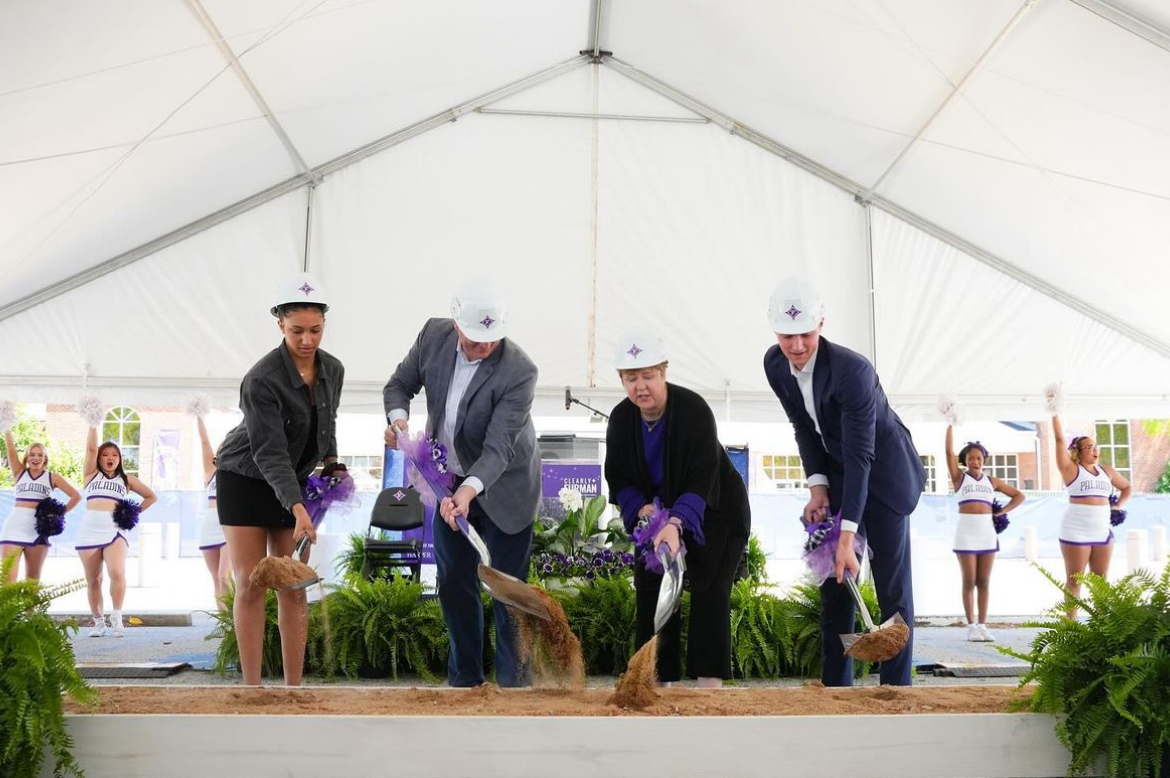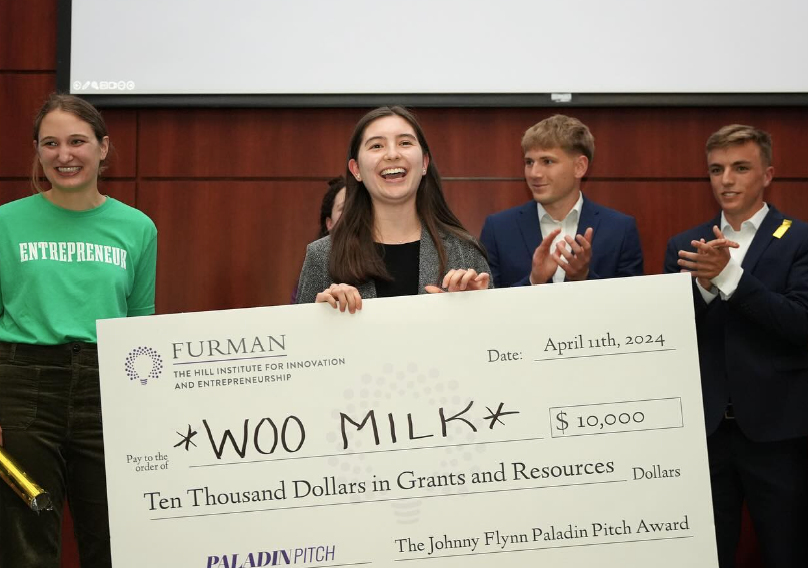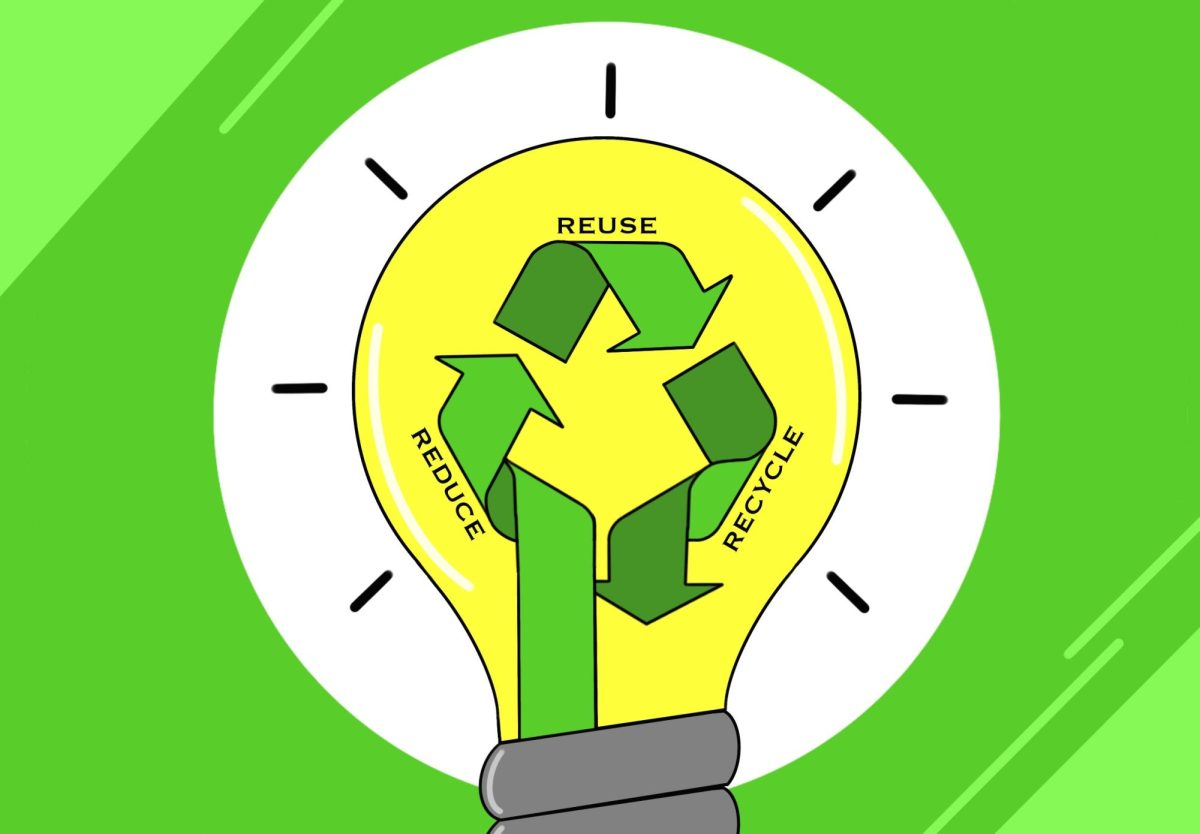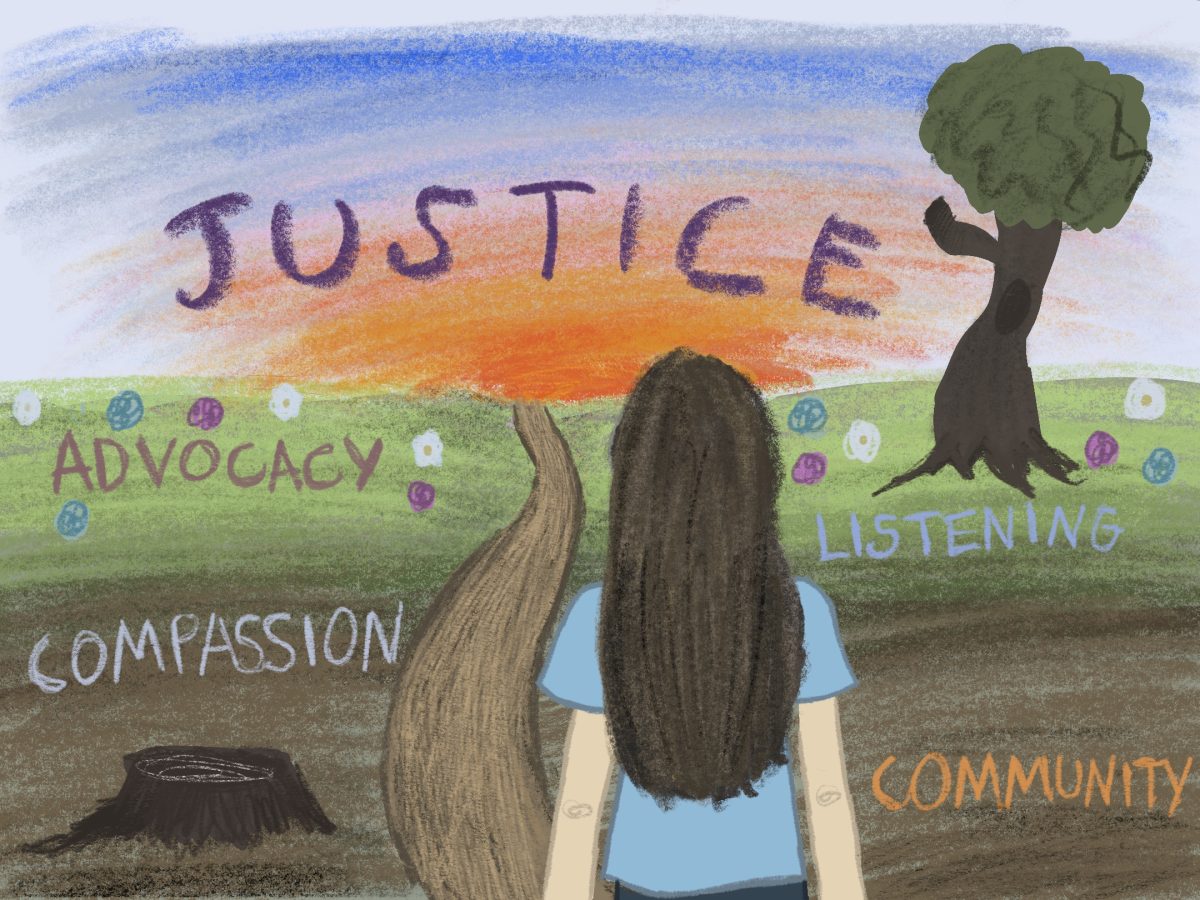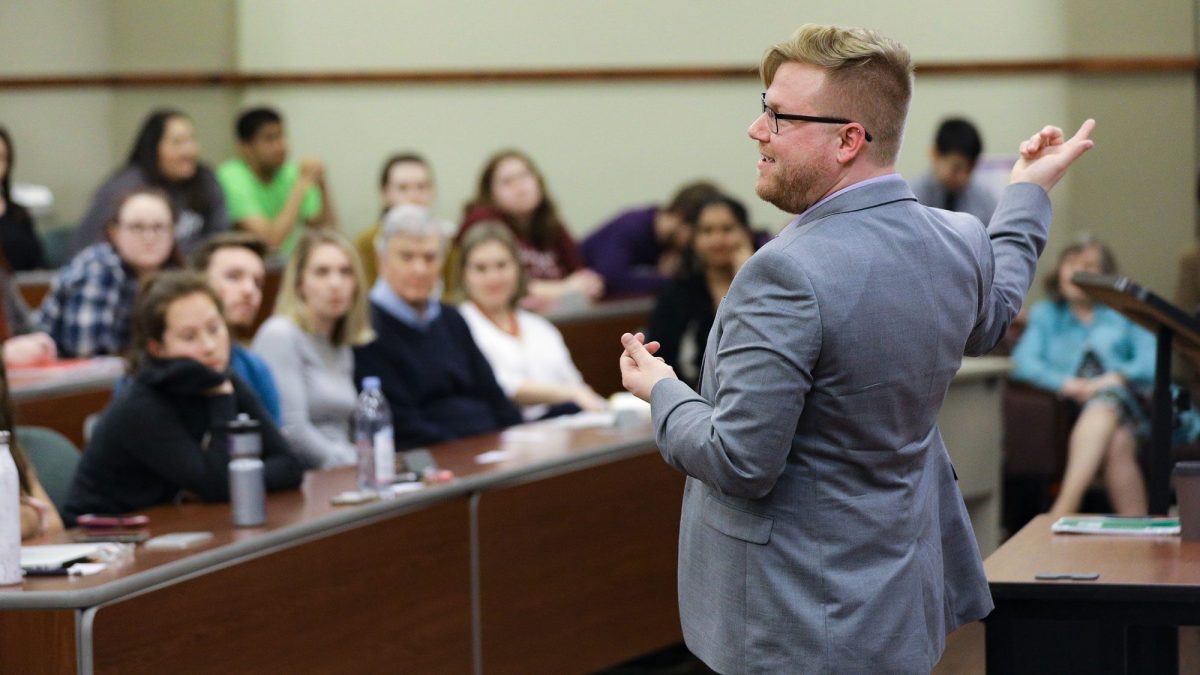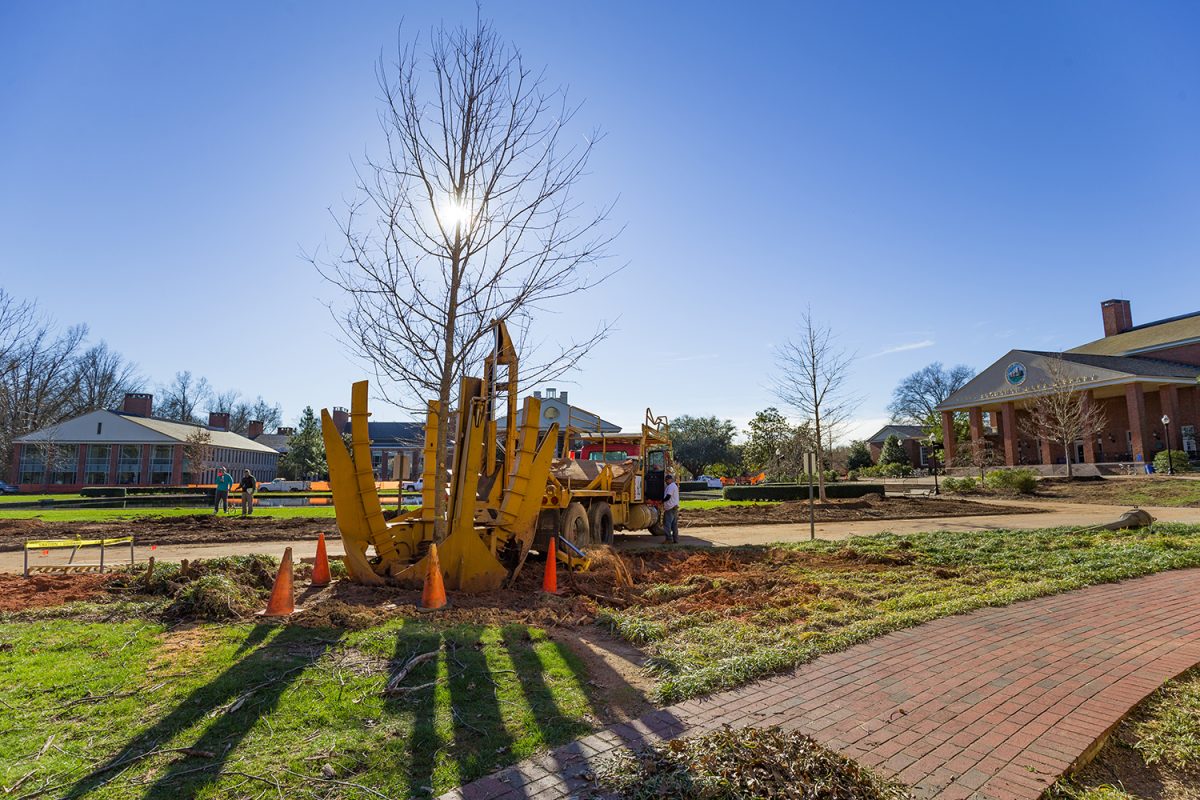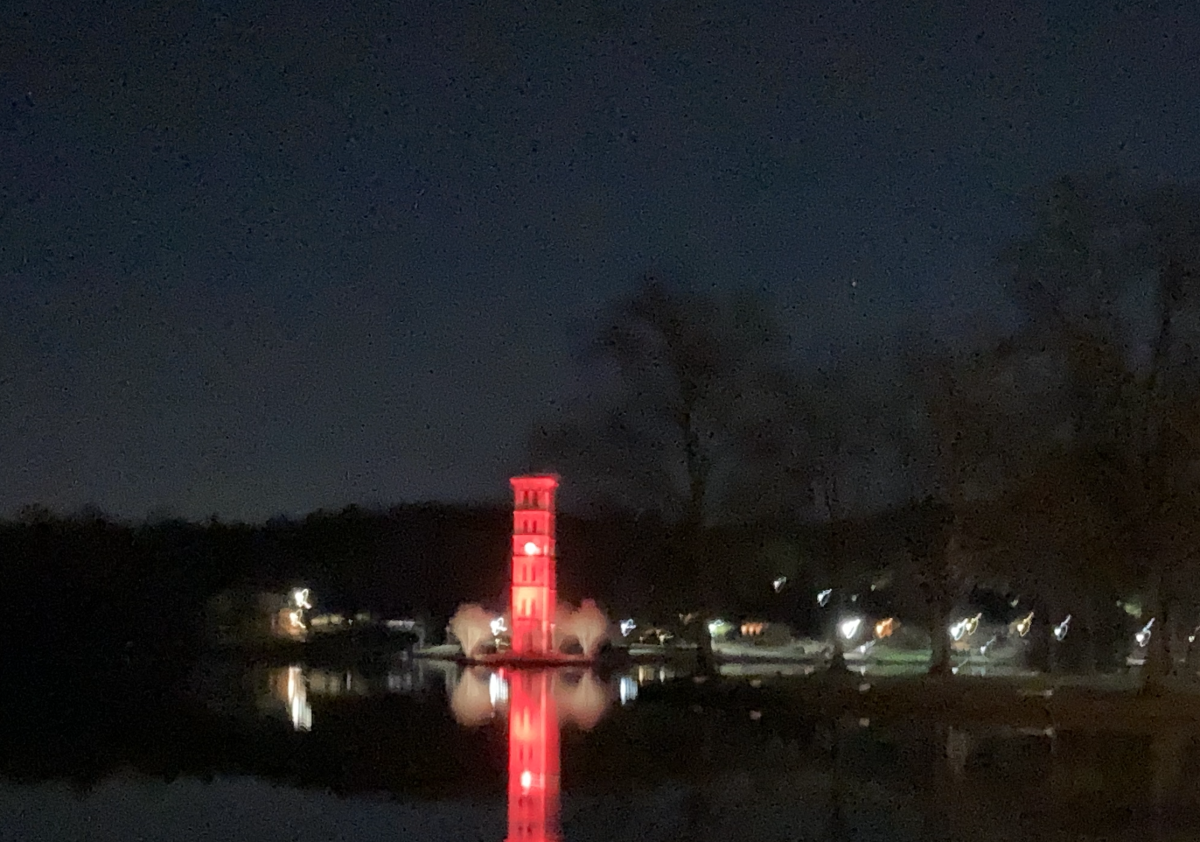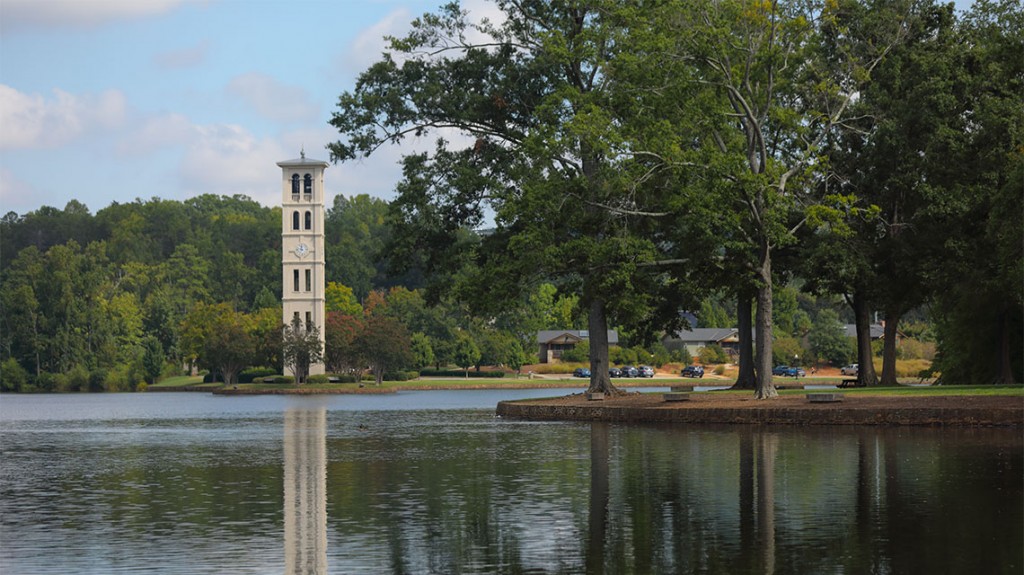When Furman’s campus reopened after winter break, students and staff alike began wondering the same thing—what is happening to the lake? The activity across the lake is scheduled maintenance and part of a fifteen-year-old plan to improve lake conditions. Furman Lake’s water quality has steadily declined since its creation in the 1950s. In April 2017, Furman University Scholar Exchange released a 13-page proposal titled “The Furman University Lake Restoration Project,” which outlined steps that could be taken to improve water quality in the lake. Ultimately, the goal of restoration efforts is to make the lake a campus epicenter once more.
The primary operation going on now is lakebed dredging. Operations are planned to take place behind the Bell Tower and in front of the Asia Garden, the bookstore and Trone Student Center. They are expected to last until early to mid-March, according to Furman Director of Landscape and Construction Scot Sherman, and draining and depositing the extracted sediment will continue through the summer.
So, what is dredging, and why is it important?
Dredging is defined as cleaning out a body of water by scooping out mud, weeds, and rubbish with a dredger. Furman Lake, like all man-made lakes, is slowly filling itself in due to the natural deposition of sediment. The sediment is filling the lake from feeder streams behind the Bell Tower and North Village as well as surface runoff from paved surfaces like sidewalks, roads, the jogging trail behind the lake and parking lots. Furman chose a small hydraulic dredge, which essentially acts as a giant vacuum cleaner, taking in sediment from the lakebed and depositing it into “geobags.” Geobags look like large nylon pillows and can be seen on the lake’s far shore, near the gazebo.
Dredging will help maintain the lake’s shape, and increasing the depth of the lake will help stabilize the ecosystem. Some areas of the lake are less than a foot deep; dredging these areas will lower the water temperature, thereby reducing the spread of algal blooms. This is beneficial as algal blooms can kill fish and release harmful compounds into the lake, which poses a threat for the entire ecosystem. Another benefit of dredging is removal of excess nutrients stored in the lakebed sediment, which will further improve water quality.
Some faculty and alumni may remember the previous dredging attempt in 2006, which involved scooping tons of sediment from the lakebed and transporting it in large trucks in a horribly inefficient (and smelly) manner. The current method, according to Sherman, is a more effective and less disruptive process. The current method of dredging is also more eco-friendly and will not be as invasive to the public’s noses.
Despite the necessity of dredging to maintain Furman Lake’s beauty, the process will have some negative impacts on the lake’s ecosystem. No preliminary studies have been carried out on the environmental impacts of dredging, so the exact negative impact is unclear and unmeasured; however, there are a few certainties. Laura Bain, Assistant Director of Sustainability Assessment at the Shi Center, explained that dredging churns lakebed sediments, which causes shifts in turbidity and local currents in the lake. Although dredging will help remove excess nutrients stored in lakebed sediments, some of those nutrients as well as other contaminants will be disturbed and dispersed throughout the lake during the process, which could upset the natural balance of the lake ecosystem and cause die-offs of some flora and fauna as well as temporarily worsening water quality.
Sedimentation is a natural process in man-made lakes – so, does permanent sediment deposit mean permanent dredging? Not necessarily. Even with current sedimentation levels, Bain estimates dredging is required only about every 15 years. Fortunately, there are methods Furman can use to reduce sedimentation and decrease the need for frequent dredging without significantly changing the lake’s landscape. Extending the riparian buffer around the water’s edge is one of the more efficient methods.
Extending the riparian buffer would tackle two of the lake’s largest water quality problems at once: the constant inflow of sediment and E. coli contamination caused by an excess of waterfowl. “The waterfowl, especially the geese, like to be able to see where they’re landing on the lake shore,” Bain explained. “If we expand the riparian buffer of native vegetation around more of the lake, the birds will be less likely to stay.”
Waterfowl will always be a staple of the Furman experience, but without open shore to land on, they will be guests rather than residents. Without regular fecal deposits from many waterfowl, the microbial conditions in the lake could improve significantly. According to the Lake Restoration Project, a riparian buffer could also “absorb nutrients and sediments entering the lake from the streams, create a beautiful array of flowering aquatic plants, create a habitat for herons and egrets, create a nursery area for juvenile fish, reduce shoreline erosion and sediment transport to water, and cool the shallows and reduce the rate of algal and bacterial growth.”
The development of a wetland in the upstream areas of the lake would also help catch sediment as it enters the lake, which would then help maintain the rest of the lake. Wetland development is a key component of the original Lake Restoration Project—the marsh would increase biodiversity of native species while also reducing sediment and excess nutrient input.
In addition to the dredging operation, several concurrent developments will be taking place. Sherman said that water aerators are planned for installation in the newly dredged areas. The aerators will increase circulation and prevent algae growth. Around the lake, the fading informational signs detailing lake restoration from the past 15 years will also be refurbished, once again bringing awareness to the ongoing nature of the lake’s development. In the now kudzu-free area where the geobags sit, landscape crews will open the geobags and spread the collected and dried lakebed sediment and plant turf grass to replace invasive kudzu.
While it may be the most visible element of lake restoration so far, dredging is only the beginning; Furman Lake has the potential to be a beautiful, naturalized habitat for a variety of species. Hopefully, future Furman students will have the chance to rent kayaks from the PAC or bookstore, as outlined in the Lake Restoration Project, and participate in other fun recreational opportunities thanks to improved water quality. Bain agreed future recreational lake usage is attainable through continued efforts to improve conditions on the lake. Furman Lake may, once again, be the gem alumni remember it to be.

